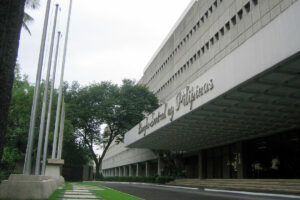




Monthly Economic Update: One for the road
 DOWNLOAD
DOWNLOAD

Inflation Update: Still low, still slow
 DOWNLOAD
DOWNLOAD

Philippines Trade Update: Exports momentum continues
 DOWNLOAD
DOWNLOAD


BSP ‘confident’ it can meet goal to digitize 50% of transactions

THE Philippine central bank is confident it can meet its target to have at least 50% of all retail payments done online by the end of this year, an official said.
Bangko Sentral ng Pilipinas (BSP) Deputy Governor and Payments and Currency Management Sector Head Mamerto E. Tangonan told reporters on Friday that the share of digital payments in the total volume of retail transactions in the country in 2022 was higher than the 30.3% seen in 2021.
“Definitely, there was an increase and we’re confident that we will make our target of 50% by 2023. The preliminary figures I saw tell me that I have reason to be happy and confident that we will meet the 2023 target,” he said.
The BSP aims to digitize 50% of the volume and value of retail transactions and to have 70% of Filipino adults be part of the formal financial system by this year under its Digital Payments Transformation Roadmap.
In 2021, the share of digital payments in the total volume of retail transactions in the country rose to 30.3% from 20.1% a year earlier, while the value of payments done online represented 44.1% of the total, up from the 26.8% share in 2020.
Mr. Tangonan said the central bank was initially concerned about base effects following the large increase seen in 2021.
“But the trend continues. It strengthens our view that the customers’ preference for payments has really been shifting towards digital,” he said.
Meanwhile, the rise in the number of online scams and phishing attacks has been slower than the growth in digital transactions, Mr. Tangonan said.
“The digital payments transactions are growing so fast, and the number of these incidents does not grow as fast. If you look at it percentage wise, it’s shrinking,” he said.
New Payment Streams
The BSP is also currently working on the launch of the request to pay payment facility this year, while InstaPay Debit Pull may “require a bit more discussion,” Mr. Tangonan said.
“We’re working with the industry. We formulate the policies, (but) it’s the industry that practically delivers it… They’re getting ready to launch request to pay, and there’s discussion on debit pull,” he said.
The request to pay facility allows payees to initiate collections by simply sending a request to pay to the payor. Payors will just need to respond to the payee’s request for their payment.
Meanwhile, debit pull would allow for a more efficient way of connecting two different financial accounts or service providers, Mr. Tangonan said.
“Right now, it’s not done in the most efficient way because it has to be done bilaterally,” he said.
Based on the latest data from the central bank, the combined value of transactions done via the BSP’s automated clearing houses InstaPay and PESONet climbed by 30.1% to PHP 3.80 trillion as of end-April from PHP 2.92 trillion in the same period in 2022.
In terms of volume, total transactions coursed through the clearing houses grew by 28.5% to 247.77 million in the first four months of the year from 192.83 million in the comparable year-ago period.
PESONet and InstaPay are automated clearing houses launched in December 2015 under the central bank’s National Retail Payment System.
The central bank has also launched the Bills Pay PH facility that allows consumers to settle their bills using their own transaction account, even if the account of the biller is with a different service provider. — By K.B. Ta-asan
This article originally appeared on bworldonline.com





 By BusinessWorld
By BusinessWorld